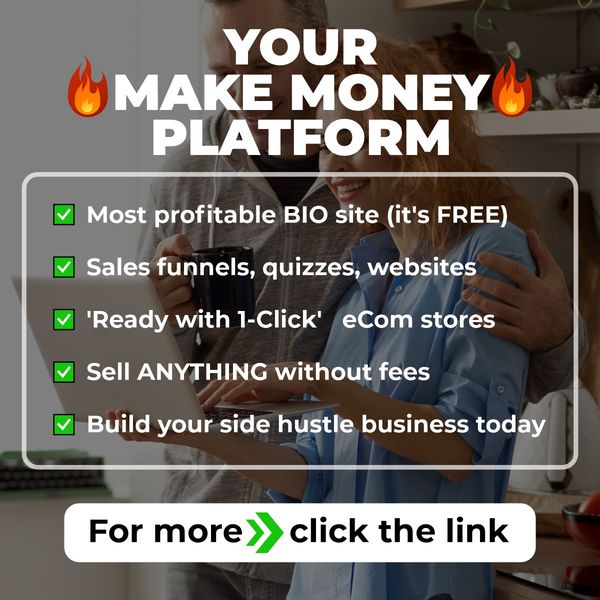
With a focused strategy you can build reliable passive income streams that aim to deliver 1000 euro per month by creating digital products, affiliate funnels, rental assets or dividend portfolios and applying automation plus ongoing optimization. You must plan for significant upfront work, scale sensibly and diversify to reduce volatility, while managing legal and market risks that can erase gains. Use measurable systems and disciplined execution so your efforts convert into steady recurring cash flow.
Key Takeaways:
- Choose scalable passive-income methods (digital products, affiliate marketing, dividend investments, short-term rentals) that match your skills and audience.
- Invest upfront time to create quality offerings, set up automation for delivery and marketing, and minimize ongoing maintenance.
- Track performance, reinvest profits to grow income, diversify streams, and ensure tax and legal compliance.
The Foundations of Passive Income
Seed capital, sustainable yield, systems and diversification form the backbone of passive income. To hit €1,000/month you need about €12,000/year; under the 4% withdrawal rule that equals roughly €300,000. Rental yields of 4–6% or dividend portfolios at 2–4% change required capital accordingly. You must balance upfront work, automation, taxation and risk like market drops or vacancies.
Defining Passive Income Streams
Dividend stocks, rental properties, digital products, affiliate marketing and P2P loans each behave differently. For example, an online course that nets €5,000 in launch sales and €200/month recurring can accelerate your path more than low-yield dividends. Rental property with a 5% net yield needs about €240,000 capital to produce €12,000/year. Quantify setup time, ongoing maintenance and tax drag before you commit.
The Financial Independence Equation
Use the simple formula: desired annual passive income × 25 = target capital under the 4% rule. For €1,000/month (€12,000/year) that implies ~€300,000. Conservative planners use 30× for a 3.3% withdrawal, while aggressive ones use 20×. Factor in taxes, inflation and withdrawal flexibility when choosing your multiplier.
Alternatively calculate capital by dividing desired annual income by expected net yield: capital = income / yield. To produce €12,000/year at a 5% net yield you need ~€240,000; at 3% you need ~€400,000. Sequence-of-returns risk and taxation can erode early withdrawals, so keep a cash buffer and diversify across asset classes to protect your passive cash flow.
Digital Products: Create Once, Earn Forever
Turn a single asset into recurring revenue by focusing on evergreen demand and scalable distribution. If you sell a €10 guide and get 100 sales/month, that equals €1,000 passive income; using platforms like Gumroad, Etsy, or Amazon KDP reduces friction. Watch out for discoverability and refunds—poor marketing kills sales faster than product flaws—so allocate at least 20% of launch time to promotion and analytics.
Building an Online Course
Map a clear learning outcome, then break content into 5–10 modules with video, worksheets, and quizzes. Price mid-tier courses at €50–€300; with an email list of 2,000 and a conservative 2% conversion, a €100 course nets €4,000 from one launch. Use Teachable or Thinkific, run a free webinar as a funnel, and track completion rates—courses with 40%+ completion get better referrals and lifetime value.
Writing an E-Book That Sells
Focus on a single, solvable problem and aim for 8,000–20,000 words to respect readers’ time. Format for Kindle, craft a 50–100 word blurb, and price between €2.99–€9.99; Amazon KDP often yields ~70% royalties in that range when requirements are met. Optimize cover, 3–5 keywords, and categories to improve discovery and conversion.
Invest in professional editing and cover design—expect costs of €100–€400; that often multiplies credibility and sales. Run short price promotions or free-day campaigns to boost ranking—many authors see a 3–5x sales lift after a successful promo. A/B test cover and blurb, then funnel buyers into an email sequence offering related products or upgrades to increase average order value.
The Power of Automated Online Businesses
Automated online businesses let you convert upfront work into ongoing income: with targeted funnels and SEO you can reach €1,000+/month without daily oversight. Typical e-commerce conversion rates sit around 1–3%, and tools like Shopify, Zapier and automated ad rules cut manual hours to under 10/week. Watch ad spend closely: high customer acquisition cost can erase margins fast, while compounding organic traffic and email lists create the most reliable passive revenue streams.
Setting Up E-Commerce Dropshipping
You pick a focused niche, source suppliers via DSers/Spocket, and automate order routing and tracking so you never touch inventory. Expect thin margins (often 10–30%) after ad costs; optimize by selling bundled products and improving AOV. Use automated customer service templates, dynamic pricing apps, and one-click upsells to push a store from side-hustle to steady €1k+/month without storing stock.
Leveraging Affiliate Marketing for Recurring Revenue
Promote subscription-based SaaS and membership programs that pay recurring commissions (commonly 20–50%); a single referral can pay for months. Focus content on long-tail keywords, comparison pages, and email sequences that nurture free users into paid plans. Lower upfront cost and no fulfillment make affiliate funnels a high-leverage path to predictable monthly income if you build a steady traffic source.
Drive recurring affiliate income by targeting high-LTV products and building a list. For example, 100 referrals paying €10/month at a 30% commission yields €300/month recurring. Create evergreen review posts, how-to videos, and an automated welcome sequence that converts 2–5% of visitors; scale by improving click-through on CTAs and testing offers. Track churn and prioritize programs with >12-month average customer lifetime for optimal compounding income.
Real Estate: Investing with Minimal Hands-On Involvement
Exploring REITs for Steady Returns
Publicly traded REITs let you own diversified real estate exposure with liquidity and quarterly dividends; many REITs yield between 3–7%. If you target a 5% dividend yield, you would need roughly €240,000 invested to generate €1,000/month (€12,000/year). ETFs like sector-specific REIT funds reduce single-asset risk, while platform fees and market volatility can cut returns—use dividend history and payout ratios to screen for sustainable cash flow.
Renting Properties with Property Management Services
Hiring a property manager shifts day-to-day tasks—tenant screening, rent collection, maintenance—to professionals for typical fees of 8–12% of monthly rent plus tenant-placement charges equal to one month’s rent. Buy a €200,000 unit with a 6% gross yield (€12,000/year); after 10% management and ~20% for taxes/maintenance you might net ~€7,500/year (~€625/month). Factor in mortgage costs and vacancy to see if units scale to your €1,000/month goal.
Dig into numbers before buying: target properties with net yields above 4% and cap rates in the 5–7% range for reliable cash flow. Build a maintenance reserve of ~1–3% of property value annually, assume 5–10% vacancy, and verify the manager’s track record—average vacancy reductions of 1–3 months per year can swing net income significantly. Effective managers can raise rents legally, reduce turnover, and handle evictions, but poor management or high repair bills are the biggest risks to your passive income plan.
Investment Strategies for Long-Term Wealth Growth
Adopt a clear mix of growth and income: many investors use a 60/40 equity/fixed-income baseline or shift to 80/20 if you have decades ahead. Rebalance annually to lock gains and control volatility. Use low-cost core index funds for broad exposure, add dividend payers and REITs for cash flow, and shelter investments in tax-advantaged accounts. Apply the Rule of 72: a 7% return roughly doubles your money every 10 years, so compounding is your ally.
The Benefits of Dividend Stocks
Dividend stocks provide steady cash you can reinvest via DRIPs to accelerate compounding; typical yields range from 2–5%. Look for Dividend Aristocrats—companies with 25+ years of increases—like Coca‑Cola or Johnson & Johnson as income anchors. You should screen for payout ratio and free cash flow: high yield paired with shrinking cash flow is a warning sign, while consistent payout growth boosts total return and lowers volatility over decades.
Navigating Index Funds and ETFs
Use index funds/ETFs as your portfolio core: Vanguard ETFs like VOO or VTI offer expense ratios around 0.03% and track broad markets that historically returned ~10% annually for the S&P 500. Dollar-cost average into the market, allocate a portion (e.g., 10–20%) to emerging markets for extra growth, and keep global diversification to reduce single-country risk. Low fees compound into materially higher net returns over time.
Pay attention to ETF mechanics: choose accumulating vs distributing share classes based on your tax status, check domicile (UCITS vs US) for withholding implications, and watch tracking error and bid-ask spreads. A higher fee of 0.45% vs 0.05% on a €100k holding costs about €450/year and erodes compounding. Ensure sufficient daily volume to avoid wide spreads and review historical tracking difference over 3–5 years before committing.
Conclusion
Ultimately, you can build a reliable stream that generates 1,000 euro per month while you sleep by combining automated systems, diversified income sources (digital products, affiliate marketing, investments), upfront work to create scalable assets, and regular optimization. Focus on quality, measurable metrics, and reinvestment to scale; with consistency and strategic execution, your passive earnings will grow predictably.
FAQ
Q: Is it realistic to earn 1,000 euro per month passively while I sleep?
A: Yes—it’s realistic for many people, but it usually requires upfront work, time, or capital. Passive income comes from assets that continue to produce cash after the initial effort: digital products (courses, e‑books, templates), membership/subscription services, affiliate revenue from content, automated e‑commerce (print‑on‑demand, dropshipping with automation), micro‑SaaS products, or investments (dividends, interest, rental income). Expect a ramp period: building the product, audience, or infrastructure often takes weeks to many months. Diversifying across two or three complementary streams reduces risk and smooths monthly revenue. Track realistic metrics for your chosen method (conversion rate, traffic, average sale) and use those to model how long until you hit €1,000/month.
Q: Which passive income methods require low upfront capital and can scale to €1,000/month?
A: Low‑capital, scalable options include: 1) Digital courses and e‑books — build once, sell repeatedly; price and volume examples: €50/course × 20 sales = €1,000. 2) Niche content + affiliate marketing — create a blog, YouTube channel, or newsletter targeting buyers; with focused promotion and SEO you can reach steady commissions (example: €30 average commission × 34 sales ≈ €1,000). 3) Print‑on‑demand or downloadable templates — minimal inventory risk, automatable fulfillment; scale via ads and SEO. 4) Memberships/micro‑subscriptions — €10/month × 100 subscribers = €1,000 recurring. 5) Simple micro‑SaaS or automation tools — higher technical effort but high margins once launched. For each, invest in one strong niche, validate demand with a landing page or pre‑sales, and use low‑cost ads, social media, or partnerships to scale traffic. Prioritize methods that match your skills so upfront time is minimized and quality is higher.
Q: What concrete steps, timeline, and tools will get me to €1,000/month, and what risks or legal matters should I plan for?
A: Steps: 1) Choose one primary method based on skills and capital. 2) Validate demand in 1–4 weeks: run a landing page, pre‑launch waitlist, or small ad test to collect emails or preorders. 3) Create an MVP in 2–12 weeks (course module, e‑book, SaaS prototype, product samples). 4) Launch and iterate: use email, content, ads, and collaborations to drive sales; expect conversion rates of 1–5% for cold traffic and higher for warm lists. 5) Automate fulfillment and customer service with tools: Gumroad/Podia/Teachable for courses; Stripe/PayPal for payments; Zapier/Make for workflows; Shopify/Printful for POD; email platforms (ConvertKit, MailerLite) for funnels. 6) Optimize and scale: reinvest profits into targeted ads, SEO, or product improvements. Timeline example: low‑capital content/affiliate path can hit €1,000/month in 3–12 months with consistent publishing and promotion; paid products or membership models might reach it faster if you have an existing audience. Risks and legal/tax items: account for taxes and VAT in your country, set up basic bookkeeping, comply with consumer protection and affiliate disclosure rules, protect intellectual property, and assess platform dependency risk (avoid single‑channel reliance). Build a cash buffer for refunds and ad spend. Monitor performance metrics monthly and diversify once you reach stable income.




Leave a Reply
You must be logged in to post a comment.